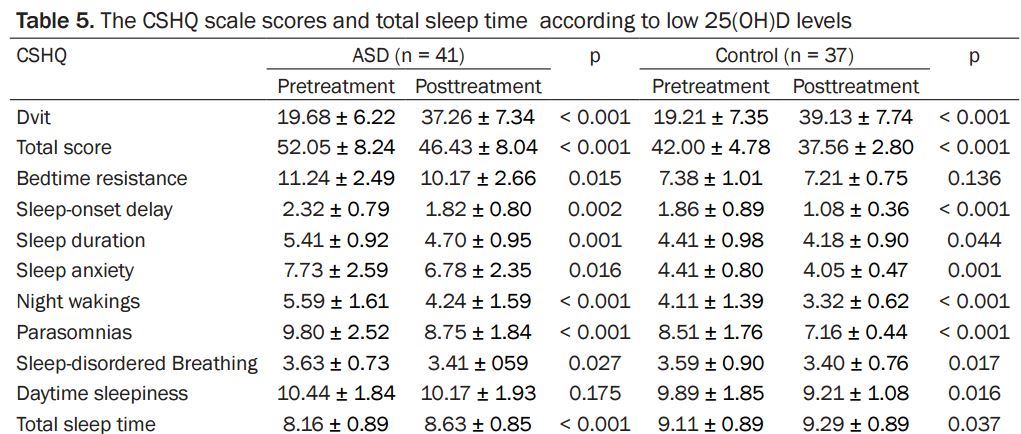Sleep problems reduced by vitamin D - Autistics and controls
Sleep disturbances and serum vitamin D levels in children with autism spectrum disorder
Int J Clin Exp Med 2016;9(7):14691-14697 www.iicem.com /ISSN:1940-5901/IJCEM0028304
Received March 15, 2016; Accepted June 8, 2016; Epub July 15, 2016; Published July 30, 2016
Serhat Guler1, Gozde Yesil2, Mine Ozdil3, Bari§ Ekici4, Hasan Onal5
1Department of Pediatric Neurology, Edirne State Hospital Edirne, Turkey; 2Department of Medical Genetics, Bezmialem Vakif University Medical School, Istanbul, Turkey; 3Department of Pediatrics, Istanbul University, Cerrahpasa Medical School, Istanbul, Turkey; 4Department of Pediatric Neurology, LIV Hospital, Istanbul, Turkey; 5Department of Pediatric Endocrinologic and Metabolic Diseases, Istanbul, Kanuni Sultan Suleyman Education and Research Hospital, Turkey
Vitamin D improved sleep of both Autistics and Controls

📄 Download the PDF from Vitamin D Life
Sleep problems are among the most prevalent comorbidities experienced by children with Autism Spectrum Disorder (ASD). There is a clinical and physiological basis for a link between 25(OH)D levels and sleep disorders. In this study we aimed to investigate the frequency of sleep disorders in ASD patients and its association with 25(OH) D levels, and whether or not these frequencies changed after 25(OH)D treatment. This prospective study included 60 consecutive patients diagnosed with ASD and matched healthy controls between the ages of 4 and 10. Patients then underwent 25(OH)D replacement therapy according to their deficiency levels. Pre- and post-therapy values were compared. Sleep disturbance was detected in 78.3% of ASD patients (n = 60) and 33.3% of the control group (n = 60). When we compared the pretreatment scores of sleep disturbance between ASD and control groups (n = 60), there were significant differences in bedtime resistance, sleep anxiety, parasomnias, daytime sleepiness, sleep duration, sleep-onset delay, night wakings subscales, and total scale score (p < 0.05); however there were no significant differences with respect to the sleep-disordered breathing subscales (p > 0.05). In ASD patients, there was a significant negative correlation between serum 25(OH)D levels and the night wakings subscale (r = -0.301, p = 0.019). In control patients, there was a significant negative correlation between serum 25(OH)D levels and daytime sleepiness subscales (r = -0.269, p = 0.038). The results indicate that it may be suitable to use 25(OH)D replacement therapy in ASD patients and healthy individuals with sleep disturbances.
